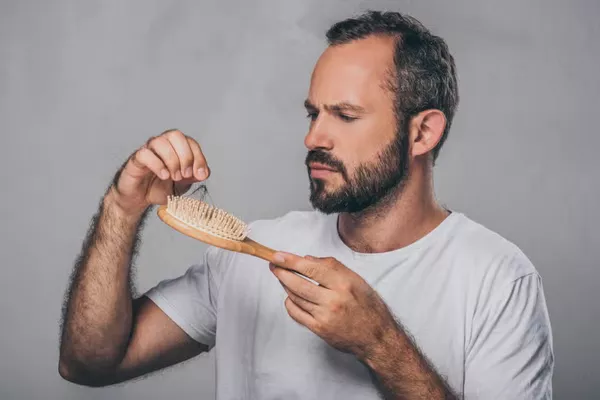Hair loss can be a distressing experience, affecting individuals of all ages and genders. Among the various types of hair loss, patches of hair loss, also known as alopecia areata, can be particularly alarming. These bald spots can appear suddenly, leaving individuals wondering about the causes behind this perplexing condition. In this article, we delve into the fascinating world of hair loss to uncover the underlying factors that contribute to the development of patches of hair loss.
I. Understanding Alopecia Areata:
An Overview Alopecia areata is an autoimmune disorder that leads to unpredictable hair loss in round or oval patches. It occurs when the immune system mistakenly attacks the hair follicles, resulting in their shrinkage and eventual cessation of hair growth. While the exact cause of this condition remains unknown, several factors have been identified as potential triggers.
II. Genetic Predisposition: The Role of Inherited Factors
Genetic Predisposition: The Building Blocks of Baldness
Research suggests that genetics play a significant role in the development of alopecia areata. Individuals with a family history of autoimmune diseases, such as rheumatoid arthritis or vitiligo, are more prone to experiencing patches of hair loss. Genetic studies have identified specific genes associated with immune system regulation and hair follicle function, offering valuable insights into the hereditary aspects of alopecia areata.
III. Immunological Factors: The Immune System’s Role
The Immune System Unleashed: Autoimmunity and Alopecia Areata
Alopecia areata is widely regarded as an autoimmune disorder, indicating that an overactive immune response may trigger hair loss. The immune system mistakenly identifies hair follicles as foreign entities, attacking them and impeding their ability to produce hair. Various immune cells, such as T cells, are believed to be involved in this process. Factors like viral infections or hormonal imbalances can contribute to immune dysregulation, potentially exacerbating the development of patches of hair loss.
IV. Environmental Triggers: External Influences
Environmental Culprits: Triggers from the Outside
While genetics and immune system abnormalities play vital roles in alopecia areata, environmental factors can also influence the onset and progression of the condition. Stress, for instance, has been linked to hair loss, including patches of alopecia areata. Emotional or physical stressors can disrupt the body’s hormonal balance, triggering an immune response that targets hair follicles. Furthermore, certain environmental exposures, such as toxins or allergens, may act as triggers for the condition in genetically susceptible individuals.
V. Psychological Factors: Mind and Hair
Mind Over Matter: The Psychological Impact of Hair Loss
The impact of hair loss extends beyond physical appearance, often affecting an individual’s psychological well-being. The emotional toll of living with patches of hair loss can exacerbate the condition. Stress, anxiety, and depression can further perpetuate the cycle of hair loss, creating a challenging feedback loop. Addressing these psychological factors alongside medical interventions is crucial in managing alopecia areata effectively.
VI. Treatment Options: Reversing the Effects
Breaking the Cycle: Available Treatment Options
Although there is no definitive cure for alopecia areata, numerous treatment options are available to manage and potentially reverse the effects of patches of hair loss. Corticosteroids, either applied topically or administered through injections, are commonly used to suppress the immune response in affected areas and stimulate hair regrowth. Other treatments, such as topical immunotherapy, minoxidil, and hair transplantation, may also be recommended depending on the severity of the condition.
VII. Coping Strategies: Embracing Change
Embracing Change: Coping with Patches of Hair Loss
Living with patches of hair loss can be challenging, but there are coping strategies that can help individuals navigate this journey with resilience and confidence. Here are a few tips:
1.Seek Support:
Connecting with others who have experienced or are currently going through hair loss can provide a sense of community and understanding. Support groups or online forums offer a platform to share experiences, seek advice, and find emotional support.
2.Embrace Styling Options:
Experiment with different hairstyles, scarves, hats, or wigs to express your personal style and boost self-esteem. Consulting with a hairstylist who specializes in hair loss can provide valuable insights and options tailored to your specific needs.
3.Practice Self-Care:
Engage in activities that promote relaxation and reduce stress, such as meditation, yoga, or regular exercise. Taking care of your overall well-being can positively impact hair health and overall confidence.
4.Educate Yourself:
Stay informed about the latest research and developments in hair loss treatments. Understanding the condition can empower you to make informed decisions and explore appropriate options for your specific situation.
5.Open Communication:
Discuss your concerns and feelings with trusted friends, family members, or healthcare professionals. They can offer support, guidance, and help you navigate the emotional aspects of hair loss.
6.Focus on Inner Beauty:
Remember that hair loss does not define your worth or beauty. Cultivate self-love and acceptance by recognizing your unique qualities and strengths beyond physical appearance.
Conclusion:
Patches of hair loss can be a distressing and puzzling condition, but understanding its underlying causes can provide valuable insights into effective management strategies. While genetic predisposition and immune system abnormalities play significant roles, environmental and psychological factors also contribute to the development of alopecia areata. By seeking appropriate treatment, adopting coping strategies, and embracing self-care, individuals can navigate the challenges of patches of hair loss with resilience and confidence. Remember, you are more than your hair, and embracing your inner beauty is the key to thriving in the face of hair loss.

